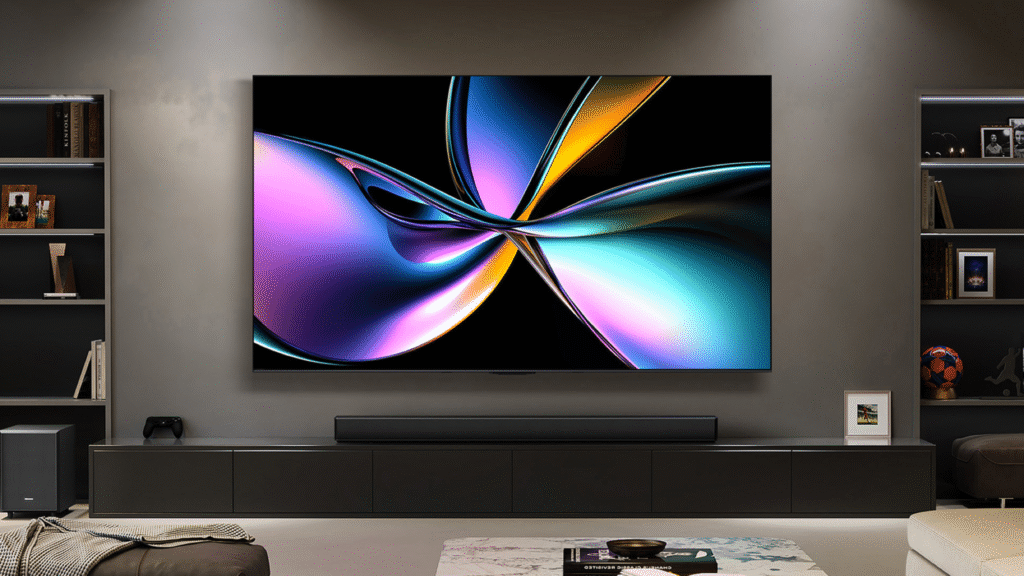Positioned neatly between the entry-level U7Q and the high-performance U8Q, the U7Q Pro is Hisense’s sweet-spot Mini-LED model for 2025. It bundles together a slew of premium features at a price point that should have every canny buyer doing a double take.
There’s Mini LED Pro backlighting, Quantum Dot inflected colour, Dolby Vision IQ support for top high dynamic range viewing, and a bar full of gamer goodness, all wrapped in a design that if not exactly couture, is certainly easy on the eye. So, is the U7Q Pro one of 2025’s best TVs?
Price & Availability
The U7Q Pro comes in a choice of 55-, 65-, 75-, 85- and 100-inch screen sizes, priced at £1,499, £1,799, £2,099, £2,999 and £4,799 respectively. We tested the 65-incher for this review.
Value wise, this Pro U7 series iteration looks to be a worthwhile step up from its U7Q stablemate (itself an update on last year’s U6 line), offering better gaming support, significantly higher HDR brightness and a superior built-in sound system.
Features & What’s New?
(Image credit: Future)
Reasons to be cheerful includes an increasingly polished VIDAA smart platform, and excellent connectivity.
Much like Google TV, this a content-first interface that serves up a curated blend of recommendations and streaming apps; all the usual key services are present, including Netflix, Prime Video, and Disney+, as well as a full suite of UK catch-up.
In addition to both conventional terrestrial aerial and satellite tuners, the set also offers Freely, the new TV-over-broadband solution from Everyone TV, a joint venture from the BBC, ITV, Channel 4, and Channel 5. This is the same group responsible for Freeview Play and Freesat, and Freely looks much the same, albeit with a smaller channel choice.
For locations without a terrestrial aerial, Freely provides easy access to public service channels; unfortunately it can be prone to stuttering and breakup if your Wi-Fi connection isn’t up to snuff.
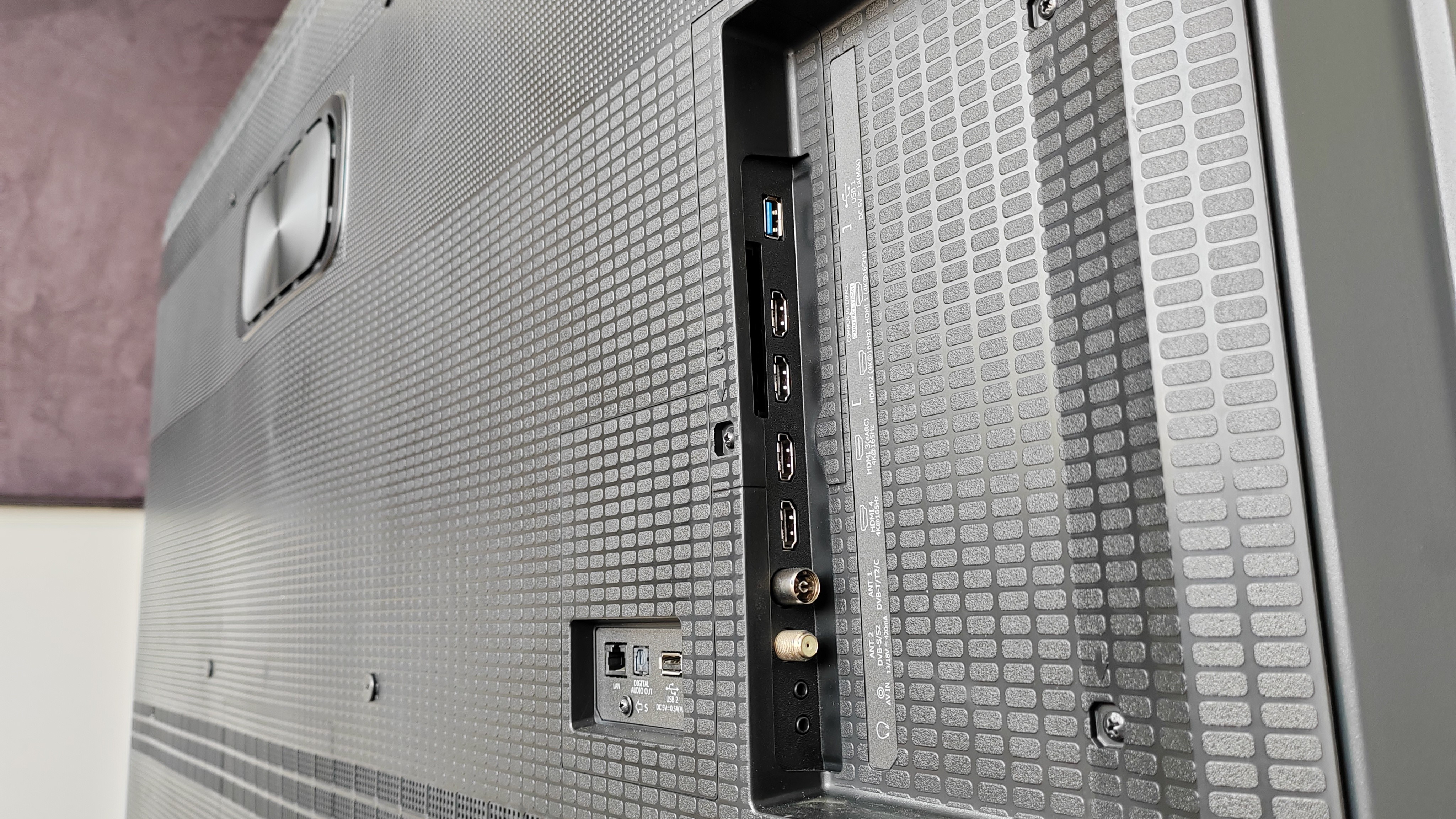
(Image credit: Future)
The U7Q Pro boasts four HDMI 2.1 inputs (one with eARC), all of which support frame rates up to 165 Hz – great news for new-gen console owners. There’s also a digital optical audio output, two USB ports, a Common Interface slot and Ethernet. If you want mini jacks for analogue AV gear, and wired headphones, they’re here too.
Apple AirPlay and HomeKit compliance are a given, as is Wi-Fi and Bluetooth.
For gamers, there’s VRR (Variable Refresh Rate), ALLM (Auto Low Latency Mode), FreeSync Premium Pro, and a dedicated Game Bar interface, which offers quick access to, and visibility of, key settings. Input lag is decent: I measured it at just 13.1ms (1080/60Hz).
Performance
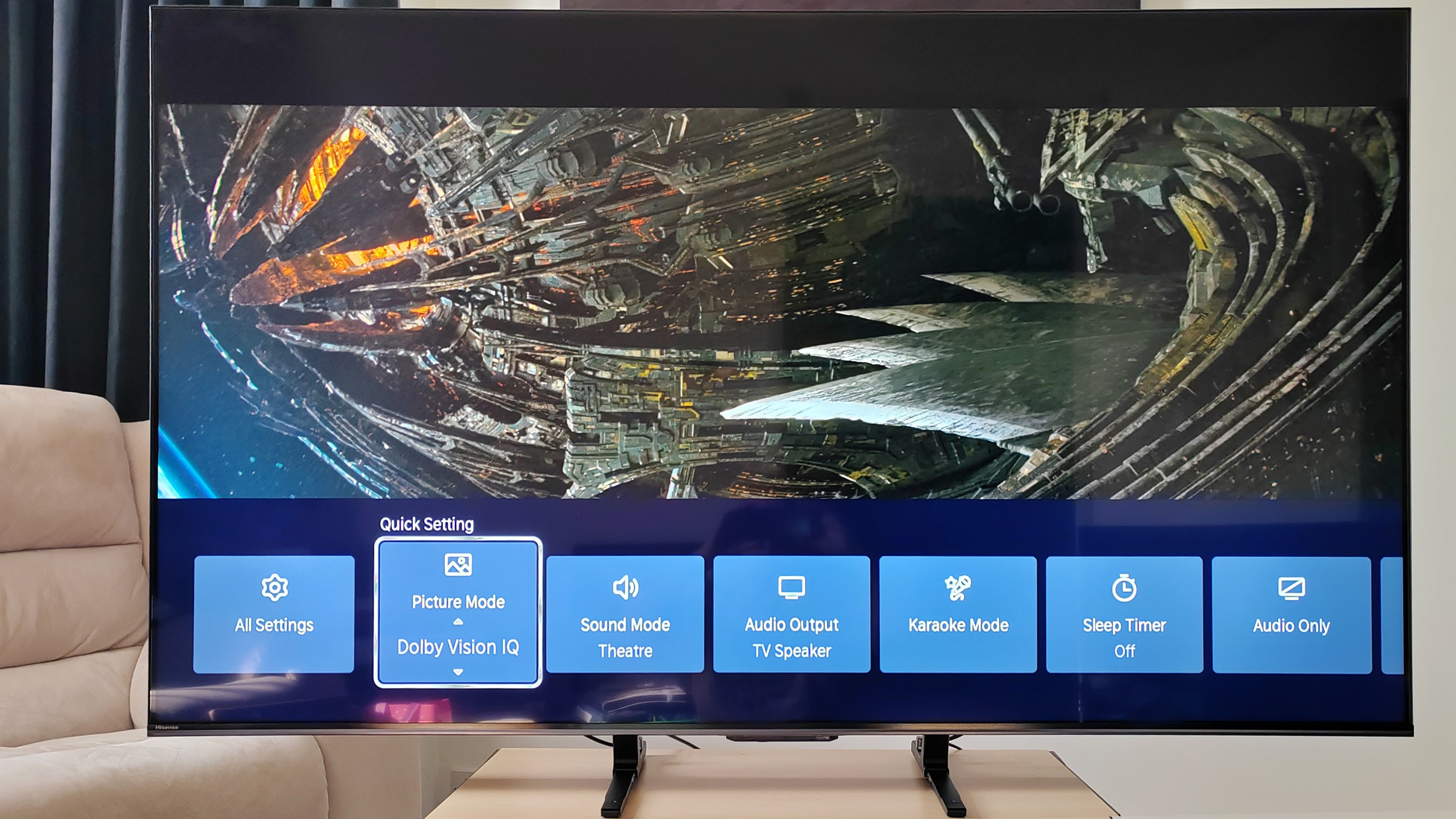
(Image credit: Future)
If you want colour, contrast and gleaming brightness, the U7Q Pro has them in spades.
With this ‘Pro’ labelled Mini LED (a suffix which seems to signpost AI picture processing, and advanced local dimming), Hisense has produced a flatscreen ready to go toe to toe with rival HDR hotshots from TCL, Samsung and LG.
I measured peak HDR brightness of just over 2000 nits (from a standard 10% measurement patch), a reserve that allows it to handle specular highlights with gusto. Fireworks sparkle, sunlight glints, and laser beams sear through the dark. If that’s what’s the grader intended, that’s what you’ll see.
There’s also welcome support for Dolby Vision IQ and HDR10+ Adaptive standards, which both adjust tone mapping to match a room’s ambient light.
Colours are vibrant but well-controlled, and black levels convincing. I did note minor haloing around bright objects on black backgrounds, but this is rarely intrusive and generally most obvious on set-generated UI overlays, or in occasional high-contrast sequences.
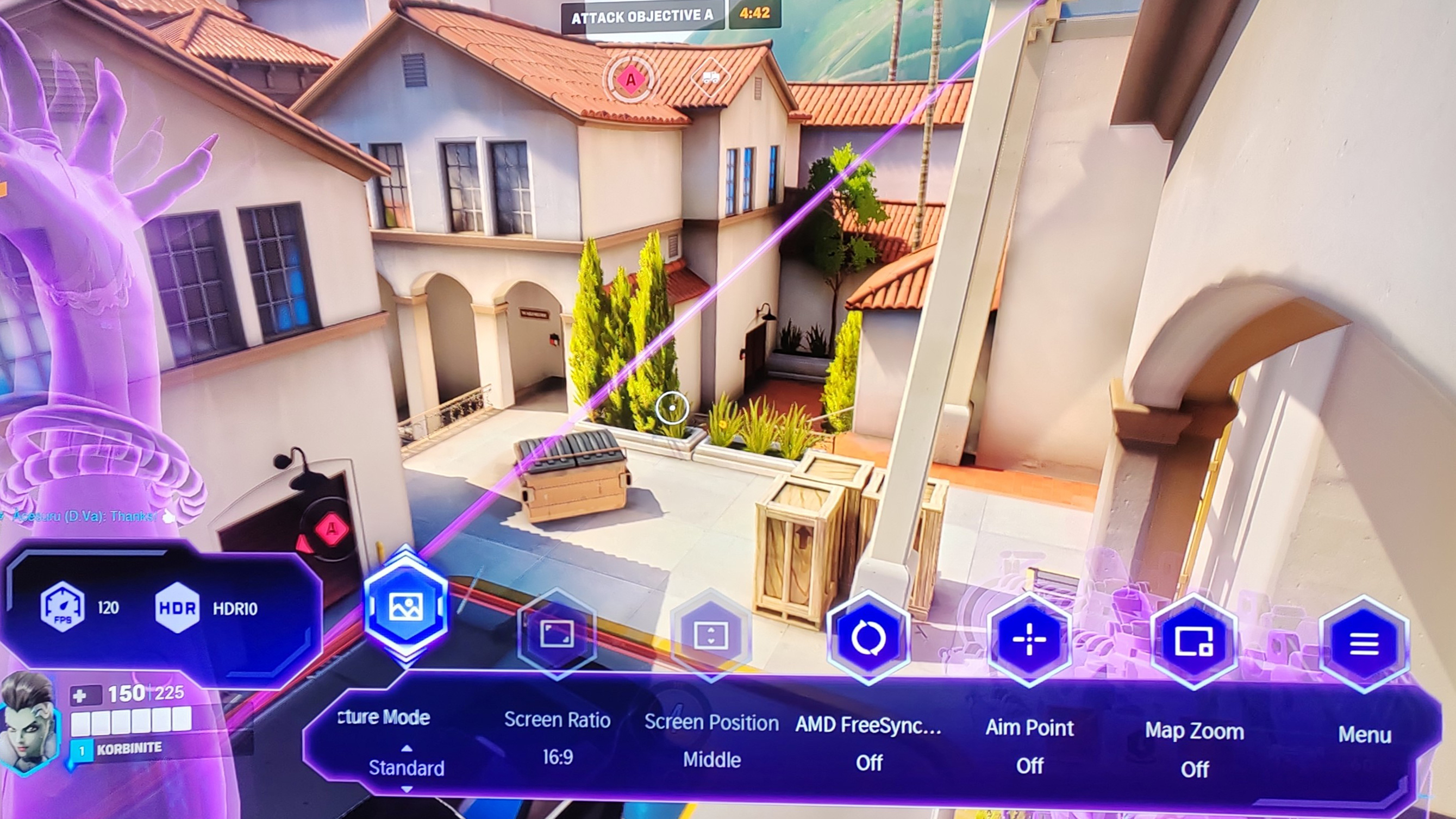
(Image credit: Future)
Motion handling is commendable. Striking a great balance, the Film preset preserves cinematic intent while avoiding the dreaded soap opera effect, while Smooth does a solid job with sports and general entertainment.
Black levels can be considered very good, with letterbox bars invariably ebony rather than grey. Dark sequences look particularly good when there’s some ambient light in the room.
Of course, Mini LED, no matter how precise the local dimming, can’t compete with the best OLED TVs when it comes to near shadow nuance. The subdued palette of Slow Horses (Apple TV+) looks a little flat, when compared to an OLED presentation.
The set favours vibrancy over subtlety, though that’s likely to please more viewers than it disappoints.
Thanks to its Quantum Dot implementation, the U7Q Pro delivers an impressively wide colour gamut. The screen draws you in with luscious reds, striking blues and nuanced skin tones.
Watching Barbie (4K UHD, Sky Cinema), the proliferation of pinks in Barbieworld are punchy but controlled; not oversaturated, yet still rich and vibrant.
Image clarity is superb. Avatar: The Way of Water (Dolby Vision, Disney+) sparkles with fine detail – the marine richness of Pandora, the sequences of driving rain, the extraordinary textures in the weaves and weaponry, all look ravishing.

(Image credit: Future)
The U7Q Pro’s 2.1.2-channel audio setup is a cut above the norm. A dedicated rear woofer, side-firing speakers, and downward-firing left/right drivers conspire to produce a soundstage of considerable size.
Dolby Atmos 5.1.2 signals are distributed thusly: height channel information is routed to the side drivers, lows go to the woofer, with the rest handled by the front array. Back watching Avatar, and there’s pronounced movement across and around this speaker array. All very exciting.
But there is an issue: bass extension was measured down to 50Hz, at which point, pushing volume up past 40 on the slider, results in significant chassis rattle, which distracts during bass-heavy sequences.
Five minutes into Dune: Part Two (Sky Cinema, Dolby Atmos), the thrum that precedes the sand dune ambush causes the entire Hisense cabinet to shake alarmingly – and not in a good way. You might want to consider one of the best soundbars alongside this set, therefore.
Design & Usability
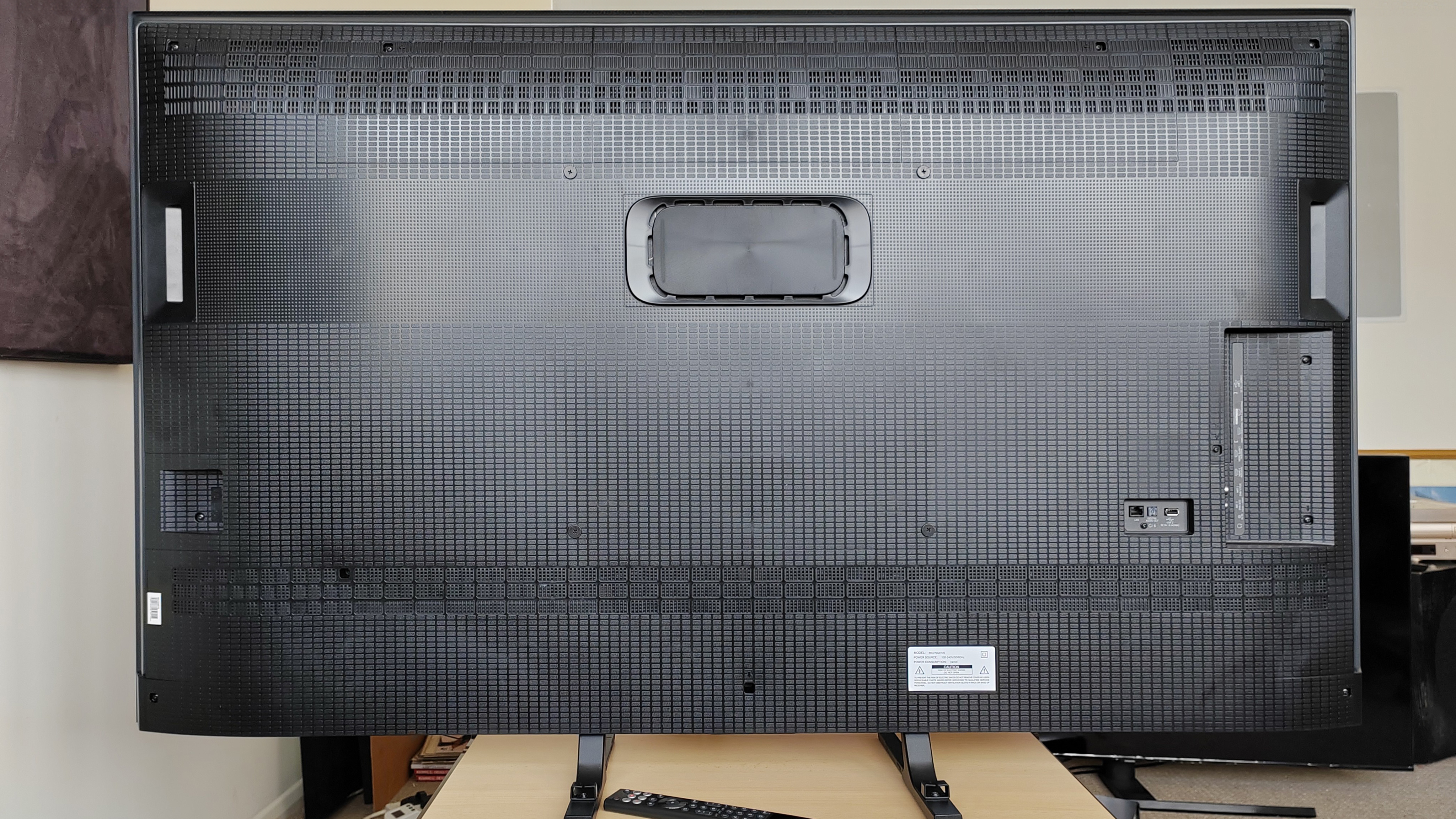
(Image credit: Future)
I suspect that the U7Q Pro won’t win any design awards, but it looks smart enough. The cabinet is around 8cm deep, which is increasingly looking to be standard depth for a Mini LED set, but the slim bezel keeps focus where it belongs – on the picture.
Centralised feet make it easy to accommodate on most AV furniture, and there’s integrated cable management to help tuck away leads.
The (partially) anti-reflective screen is also a welcome addition, as it doesn’t entirely steal the gloss which can make black levels pop, yet is effective in a real world, multi-light source living space.
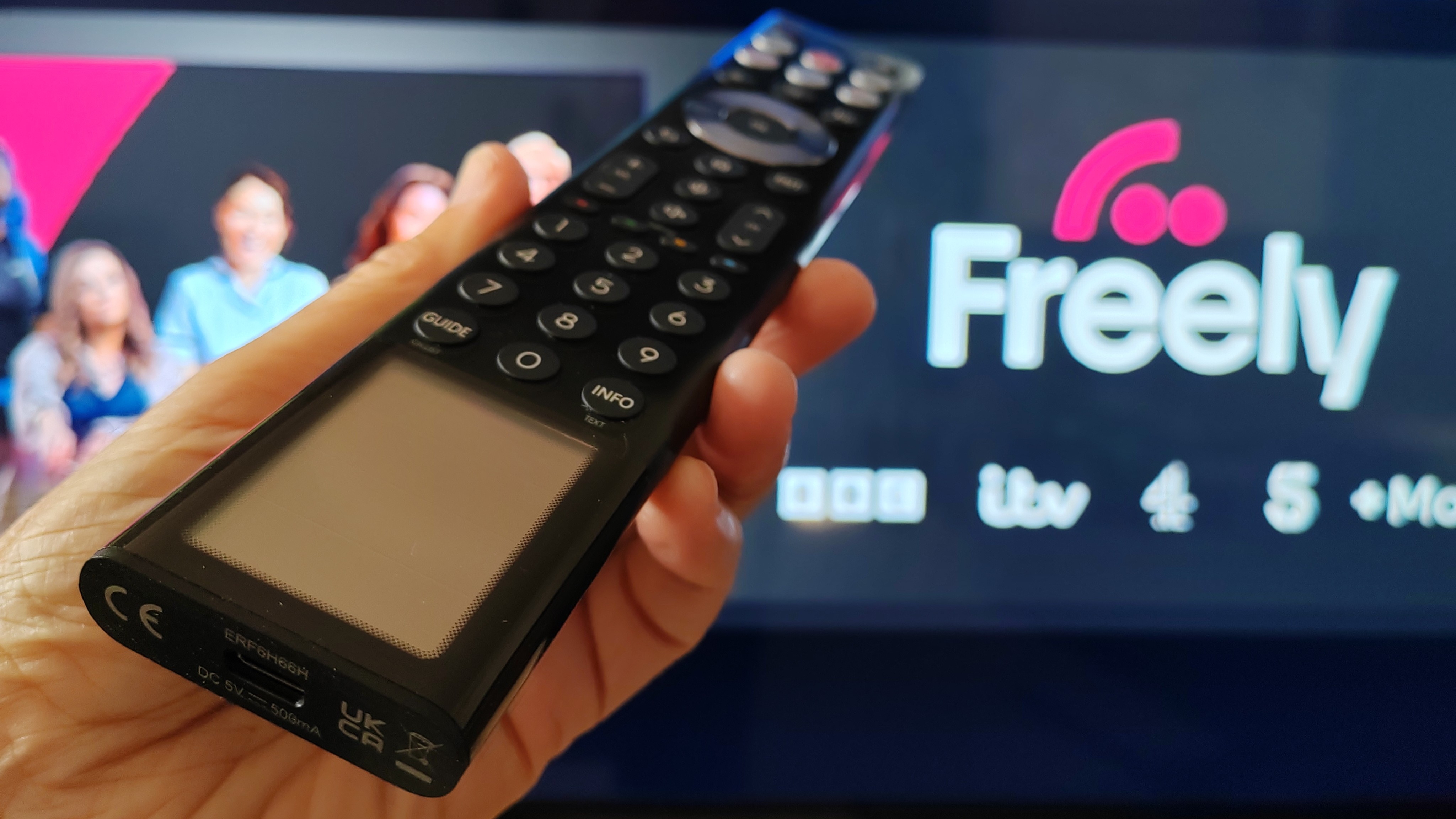
(Image credit: Future)
The battery-free Solar Remote control is a nice touch too, even if the solar window does extend the wand somewhat.
It has dedicated shortcut buttons for Disney Plus, YouTube, Prime Video, Netflix, Freely and Hisense’s own channel suite.
Buttons are also backlit, which proves helpful during a dark room screening.
Hisense U7Q Pro review: Verdict
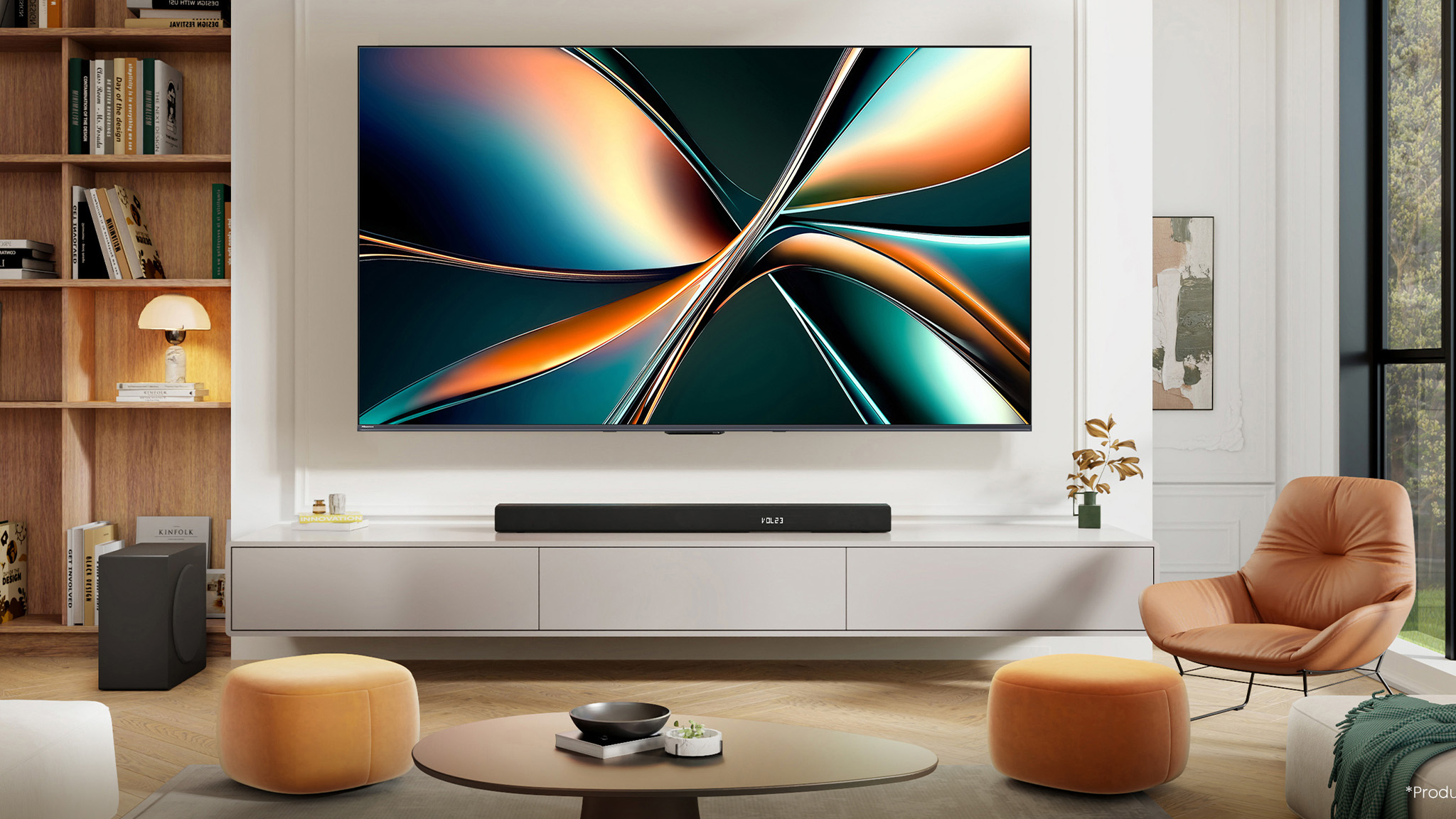
(Image credit: Hisense)
Hisense provides a compelling case to step away from the budget aisles and step back from the high-end, with the U7Q Pro. It’s packed with attractive features, and it’s very easy to live with, in no small part to the latest iteration of the VIDAA smart TV system.
It’s not flawless, though. Peak brightness may be high, but shadow detail can look a little soft, and its audio performance is hampered by cabinet resonance. Still, at this price, it’s hard to find this quality of HDR, wide HDMI 2.1 coverage, and smart functionality in one place.
Overall, the Hisense U7Q Pro is a well-equipped Mini-LED TV that punches above its price point, delivering big-screen gaming and everyday TV duties with aplomb. It’s easily good enough to make you reconsider spending more.
Also Consider
Hisense’s closest rival is TCL, with the C7K series, also in a range of sizes, offering an even more compelling lower-price option.


